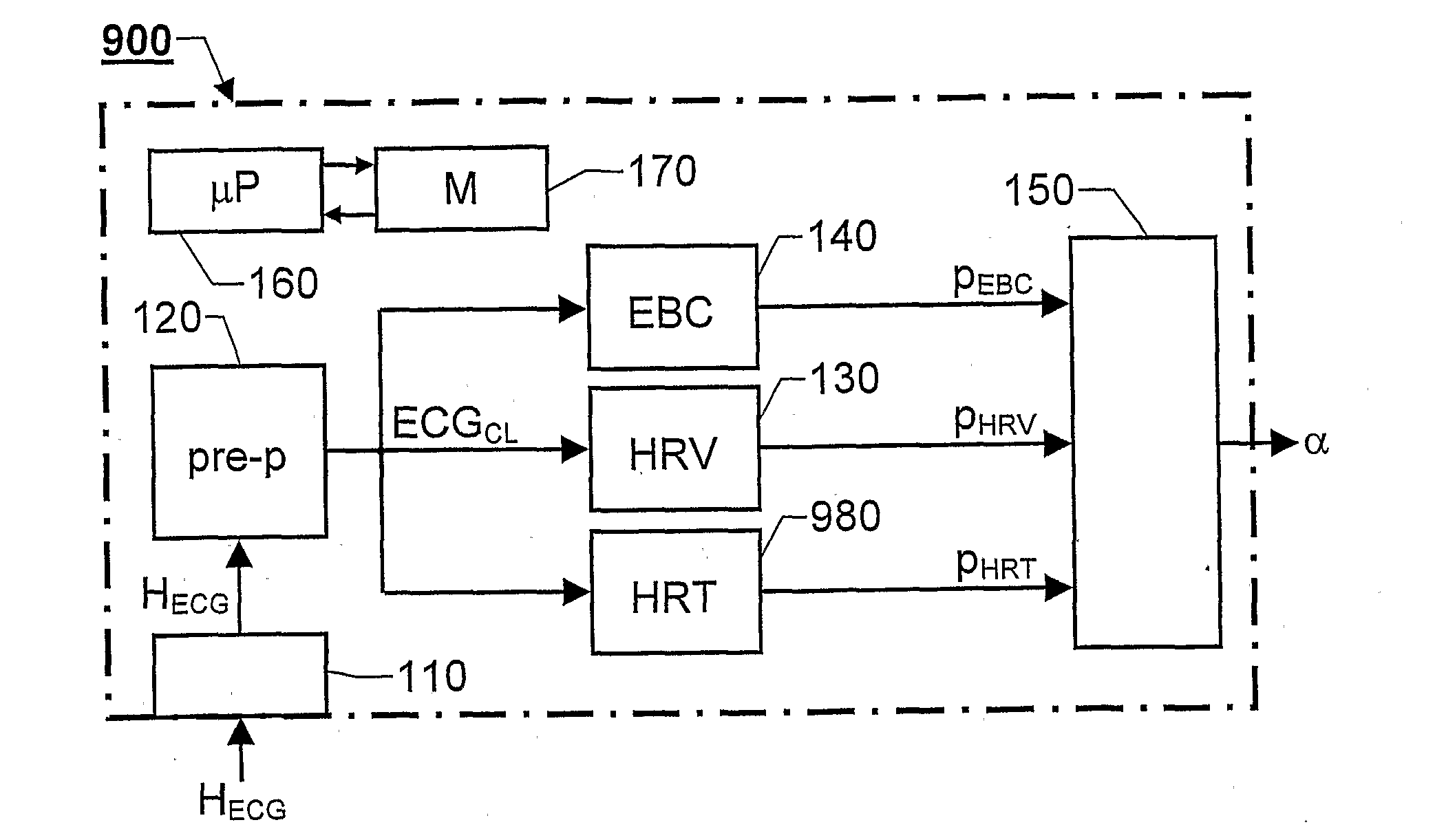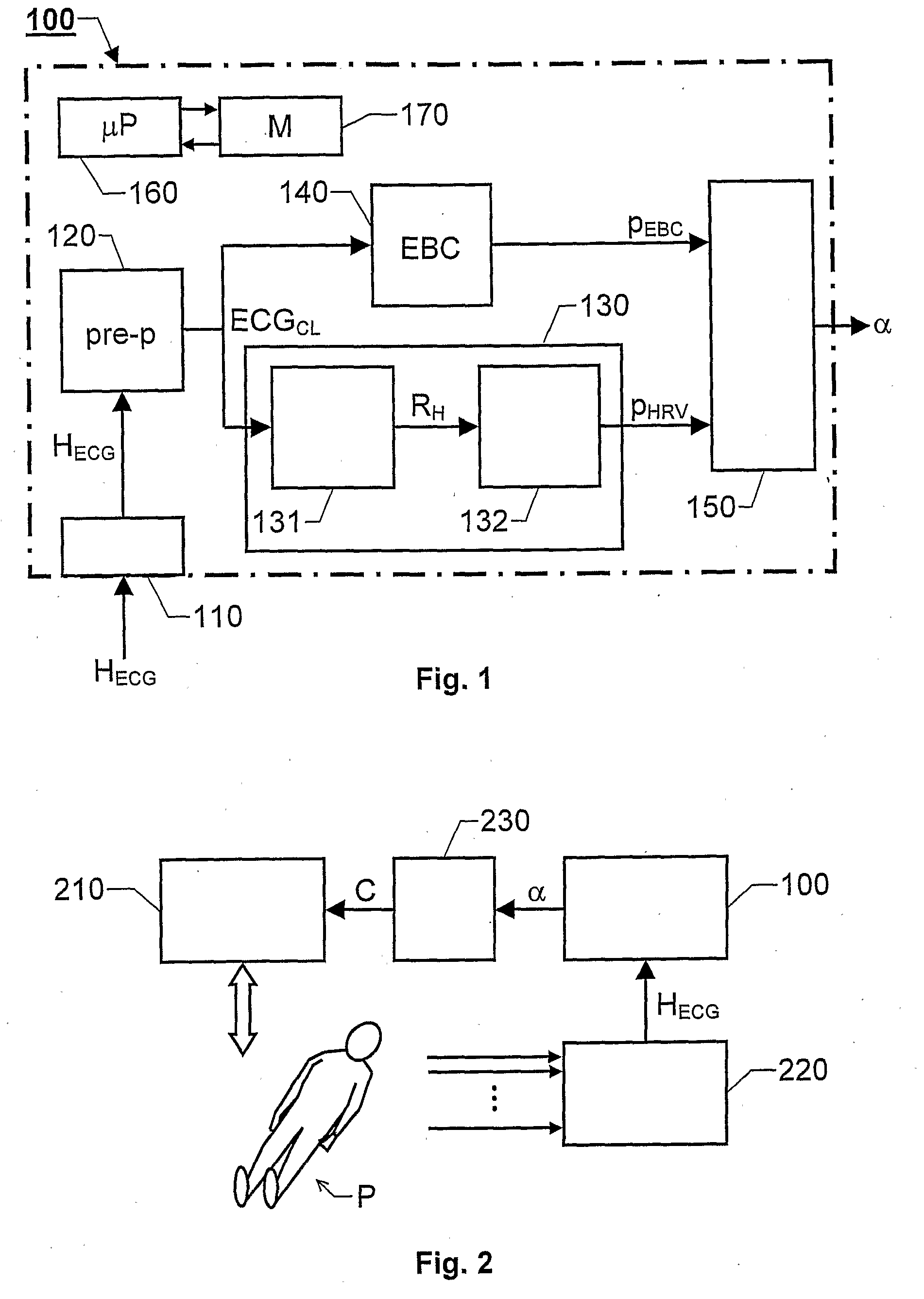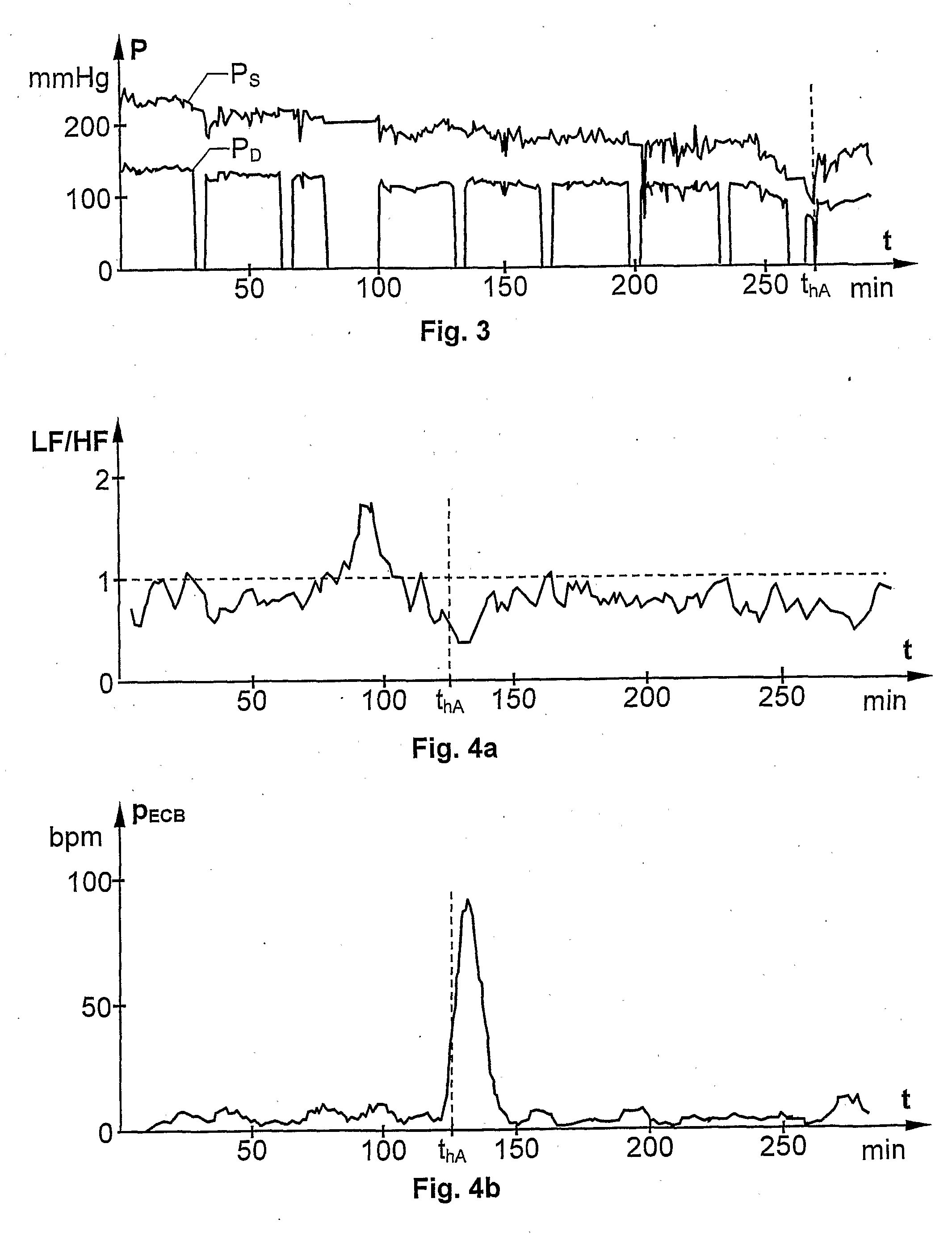Detection of drastic blood pressure changes
- Summary
- Abstract
- Description
- Claims
- Application Information
AI Technical Summary
Benefits of technology
Problems solved by technology
Method used
Image
Examples
second embodiment
[0103]FIG. 9 shows a block diagram over an alarm apparatus 900 according to the invention. All elements, units and signals associated with reference symbols also occurring in the FIG. 1 designate the same elements, units and signals as those described above with reference to this figure.
first embodiment
[0104]Nevertheless, in addition to the units of the invention shown in the FIG. 1, the apparatus 900 includes a third analysis unit 980. This unit is adapted to determine at least one heart-rate-turbulence (HRT) parameter pHRT based on the electrocardiogram signal HECG, or the enhanced version thereof ECGCL. Naturally, in this embodiment, the alarm generating unit 150 is also adapted to trigger the alarm signal α if the at least one HRT parameter pHRT fulfils at least one third alarm criterion. Specifically, the at least one HRT parameter pHRT is primarily tested if the intensity of ectopic beats pEBC is relatively high (i.e. a determination being based upon the signal produced by the secondary analysis unit 140).
[0105]The rationale behind the test of the at least one HRT parameter pHRT is that, for normal subjects (i.e. being relatively hypotension resistant), the heart rate should increase immediately after a VEB, and then during a subsequent period return to baseline again. These...
PUM
 Login to View More
Login to View More Abstract
Description
Claims
Application Information
 Login to View More
Login to View More - R&D
- Intellectual Property
- Life Sciences
- Materials
- Tech Scout
- Unparalleled Data Quality
- Higher Quality Content
- 60% Fewer Hallucinations
Browse by: Latest US Patents, China's latest patents, Technical Efficacy Thesaurus, Application Domain, Technology Topic, Popular Technical Reports.
© 2025 PatSnap. All rights reserved.Legal|Privacy policy|Modern Slavery Act Transparency Statement|Sitemap|About US| Contact US: help@patsnap.com



